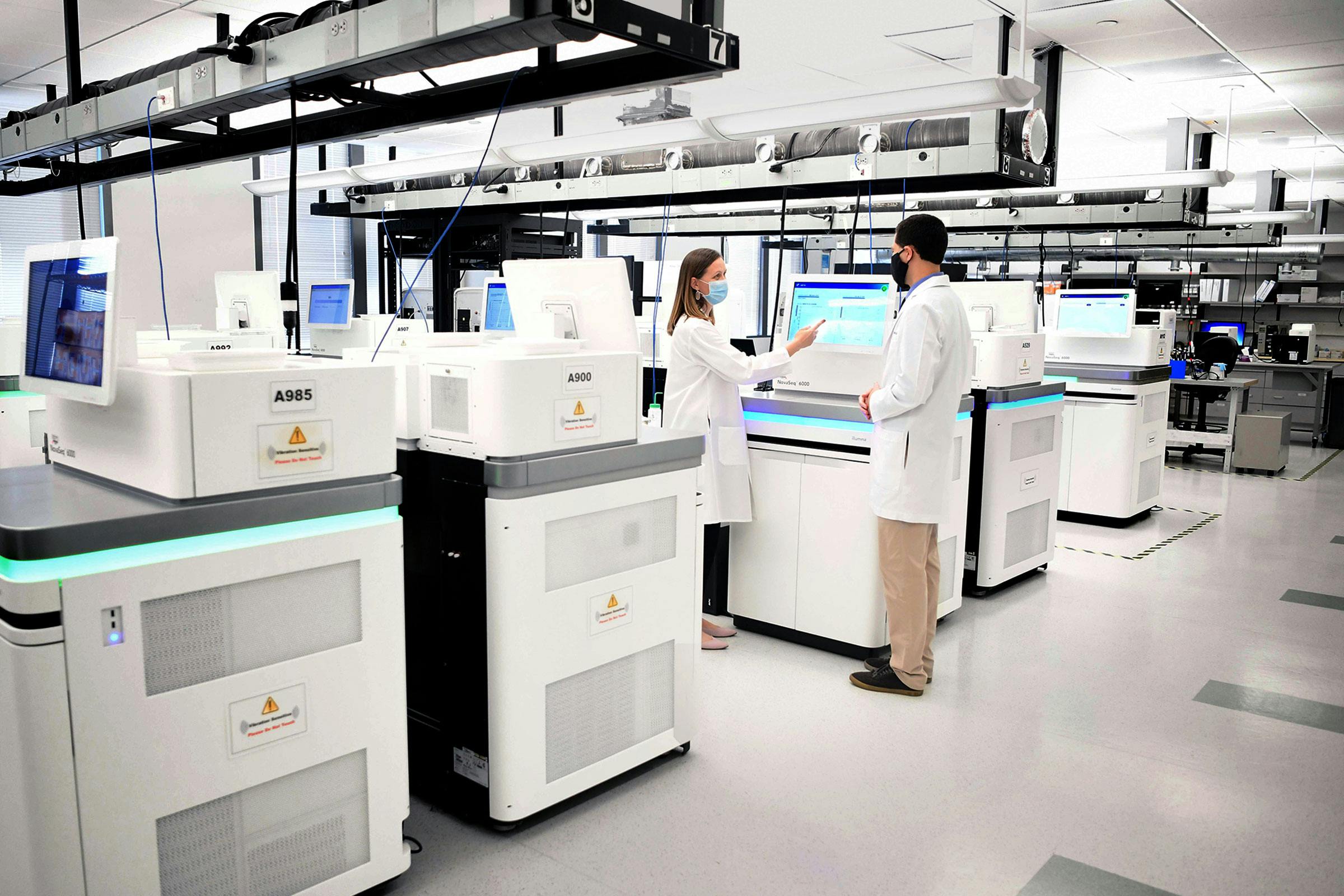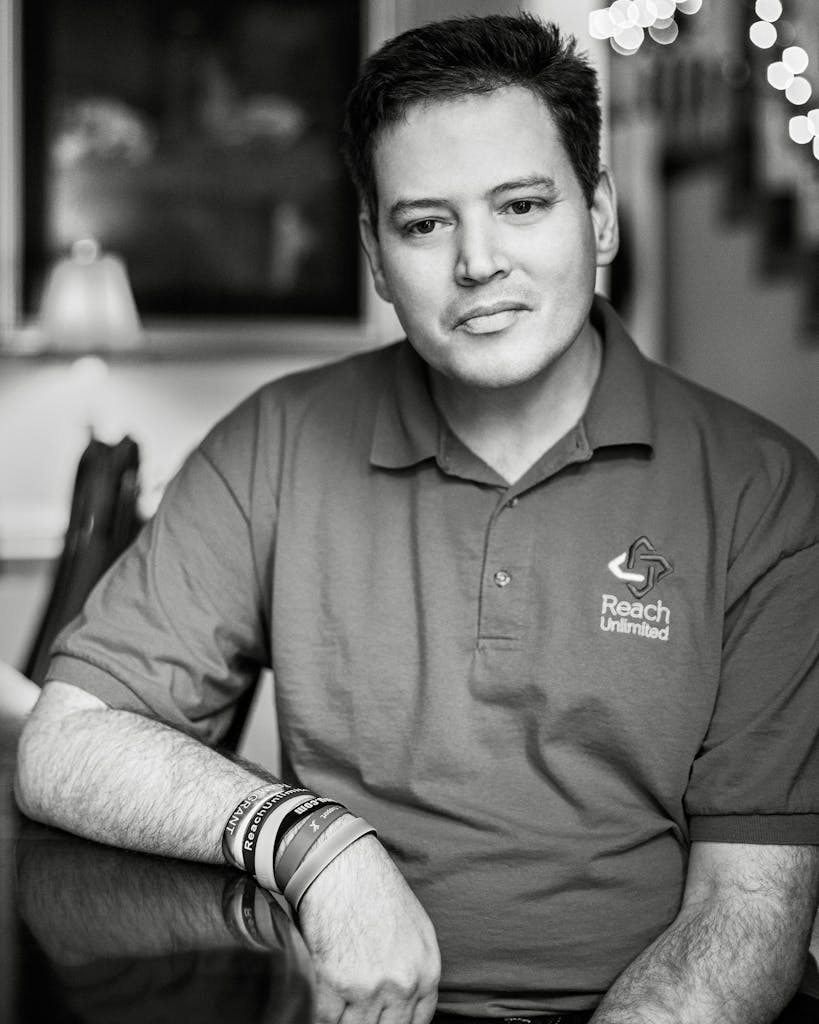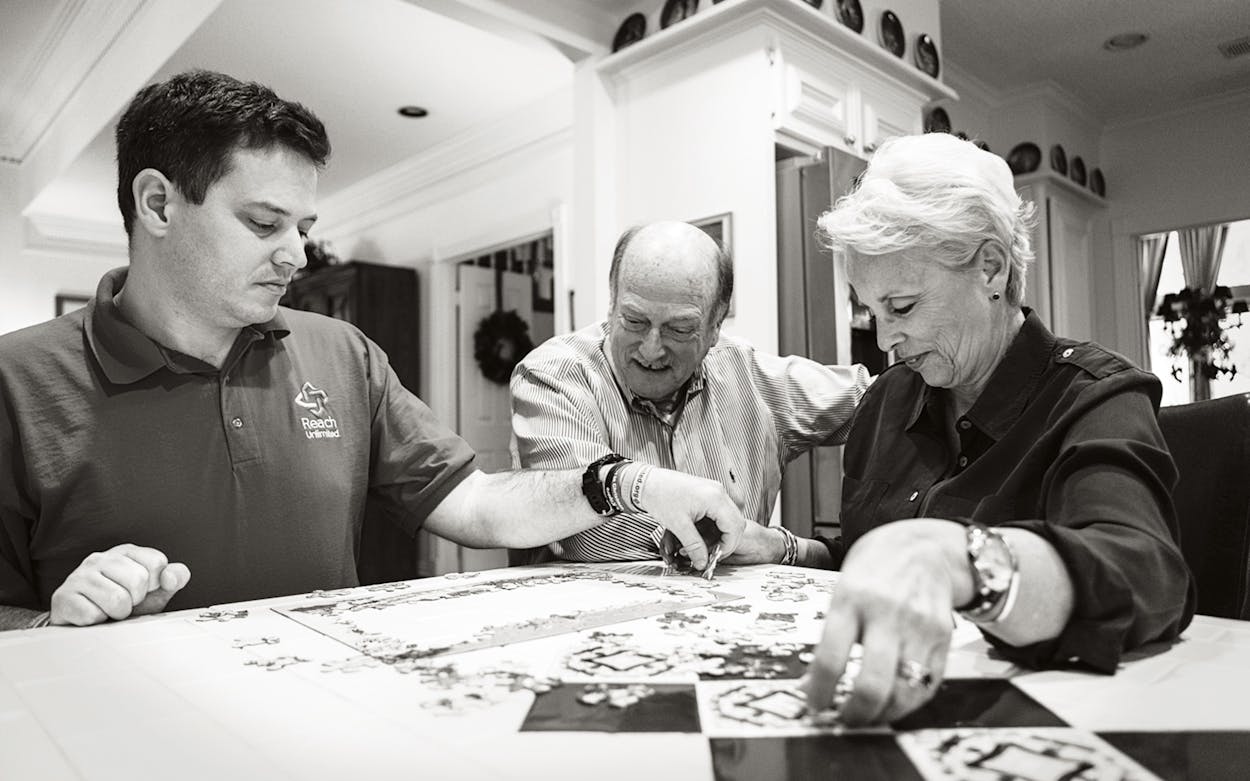When Kathleen Stallworth’s son Kyle was about six weeks old, she started noticing something wasn’t right. “He didn’t look at us, he didn’t smile, and he had some weird eye movements,” she said. “Our pediatrician thought he was blind.”
When, at five months, Kyle’s development continued to be delayed, Kathleen and her husband, Darrell, were puzzled, as their two older sons were high-achieving students. Kathleen enrolled Kyle in therapy; every week, she made the traffic-clogged, thirty-mile drive to Houston’s downtown area, so Kyle could have sessions at a cerebral palsy treatment center, which offered the closest fit for the treatment he needed.
Although his struggles created difficulties for the family, the Stallworths were in a better position than most to provide Kyle with what he needed. Darrell worked for what was then called the Texas Department of Mental Health and Mental Retardation and Kathleen worked for a nonprofit that provided cochlear implants for deaf children. The Stallworths were well-educated. They had resources at their disposal, including health insurance, savings, and an awareness of how to navigate the system. Yet even with these advantages, getting the right care for Kyle was tremendously difficult. “Because there was no diagnosis, nobody really knew what the deal was,” Kathleen said.
At first, Kyle’s progress toward the benchmarks set by his cerebral palsy therapists was hit or miss; his development didn’t look anything like that of other patients. The therapists might set a goal for him to sit up within three months, only for him to learn that skill the next day.
Eventually, the Stallworths found a therapist who was a better fit for Kyle—and then their health insurer refused to cover the sessions. “For fifteen years, we paid every penny of it,” Kathleen said. They were fortunate to be able to pay for the sessions out of pocket, though it wasn’t easy, given that they had three other children, including a daughter born after Kyle.
Kyle was eventually diagnosed with an intellectual disability, a broad diagnosis whose symptoms can look very different from patient to patient. Kyle’s issues included a language disability, social interaction problems, attention deficit hyperactivity disorder, and difficulties with memory, motor skills, problem-solving, and logical reasoning. Kyle, who is now forty, can’t read and depends on his parents for help with many of the tasks of everyday life, including showering, brushing his teeth, and getting dressed.
Yet, for all of its detail, the diagnosis offered no explanation for what might have caused Kyle’s problems. The Stallworths didn’t know if his disability was the result of genetic factors or environmental ones.
“I probably thought about it every day for thirty-nine years,” Kathleen said. “What happened to Kyle?” She pondered every potential contributing factor. She’d been pregnant with Kyle during the summer of 1980, which was one of the hottest on record, so she wondered if the heat had somehow hurt him. She also remembered that when Kyle was an infant, there were reports of tainted baby formula that had caused brain damage in children. Might that have been the cause?
For years, Kathleen wondered if she were somehow to blame for Kyle’s disability. “I can accept what happened,” Kathleen said. “What I can’t accept is not knowing what happened.” She and Darrell were at sea on what some doctors call the “diagnostic odyssey”—the long, torturous search for the cause of an uncommon condition.
Then, about two years ago, one of Kathleen’s friends forwarded an email advertising a study being conducted at Baylor College of Medicine’s Human Genome Sequencing Center, in Houston. There, researchers were using a relatively new technology, exome sequencing, and focusing on adults with intellectual disabilities who never received a formal diagnosis of a genetic basis for their condition.
Kathleen applied and Kyle was accepted into the study, which was part of an effort to quantify what effect a precise genetic diagnosis would have on adult patients. The study was small, limited to five patients in the Houston region, and was funded by the center and a private donor, which allowed the testing to be done free of charge. This is no small thing for some families, given that such tests are expensive and insurance companies often don’t cover them.
The test itself was simple, anticlimactic really, after all the years of waiting. The doctors asked Kathleen and Darrell about Kyle’s medical history and took saliva samples from all three of them. The appointment lasted about an hour.
Then, the Stallworths waited for the results. Maybe, just maybe, Kathleen thought, they would get an answer. But she tried not to get her hopes up too much.

If you were to stretch out the DNA found in each human cell and count every single base pair—the units that make up each strand of DNA—you would find 6.4 billion of them. This sequence of base pairs forms the genome and it acts as a blueprint, containing our body’s assembly instructions, including how to develop from a single fertilized egg into a full-grown adult, as well as how to construct the machinery that keeps our bodies running smoothly.
These 6.4 billion base pairs are, in essence, a doubled set, one from each parent. The two sets are almost identical for nearly everyone—if you were to take two random people and look at the sequence of bases in their genomes, about 999 bases out of every 1,000 would be exactly the same. Inheriting a copy from each parent provides a built-in system that can, in some cases, offset missing or broken parts and create just enough variation, so that a child will have a blend of traits from both parents.
The Human Genome Project, an international effort to sequence the genome for the first time, was launched in 1990 and completed its mission in 2003; its sequencing work cost hundreds of millions of dollars. The technology has improved since then, but sequencing an individual’s genome remains an expensive undertaking, one that isn’t yet practical for most patients.
One way to make the process more accessible is exome sequencing, which was invented a little over a decade ago. Rather than tackling the entire genome, exome sequencing focuses on the approximately 1.5 percent of base pairs called exons—the sections that contain the direct instructions for the proteins that form the building blocks and machinery for making our bodies work. Sequencing this part of the genome catches most rare genetic conditions while remaining within the margin of affordability—usually thousands of dollars, though costs vary widely.
Since exome sequencing became clinically available in late 2011, it has provided answers to many patients. “I never in my wildest dreams thought we would have all these tools,” said Dr. Hope Northrup, a medical geneticist at UTHealth’s McGovern Medical School, who was not associated with the Baylor College of Medicine study. Since the introduction of exome sequencing, Northrup has provided precise diagnoses for dozens of patients and their families, some of whom spent decades searching for answers. Not all patients who undergo exome sequencing will receive a diagnosis. Some mutations lie outside the exome; others may reside in a part of the exome that is still poorly understood, which makes a small discrepancy easier to miss.
Of the five patients enrolled in the Baylor pilot study, three got a diagnosis. One was Alexa Smith, a 28-year-old Houston resident diagnosed with a rare mutation in the MED13L gene. For her mother, Cindy Smith, the finding was a huge relief, as it offered insights into the symptoms Alexa had exhibited over the years, which, in addition to an intellectual disability, included surprises such as developing cataracts in both eyes when she was eight. “There wasn’t really a road map of medical issues that would come up along the way,” Smith said. “We just had to deal with things as they came up.” Getting this diagnosis meant Smith could have her daughter screened for a heart defect associated with the syndrome.
“Many syndromes don’t occur in isolation,” said Dr. David Murdock, a Baylor College of Medicine faculty member who was involved with the study. “They don’t just affect the brain or development; they can affect other systems, like the heart or the kidneys.” For some patients, this might mean predispositions to certain types of cancers, which, if screened for and detected early, can be treated more successfully.

In late 2019, Kathleen Stallworth finally got the answer she’d waited years to hear. The Baylor doctors discovered that Kyle’s condition was caused by a mutation in the TUSC3 gene. This is an extremely rare condition—the known cases worldwide number in the dozens—and results from inheriting two mutated copies of TUSC3, one from each parent.
This mutation is so rare that the chances of a pair of parents both being carriers is akin to buying two winning lottery tickets on the same day. Each of the Stallworths’ four children had a one-in-four chance of being born with the condition—and, in fact, one in four was. Kyle’s three siblings may be carriers, and their eight children may be carriers too, though none have Kyle’s condition. “It brought a lot of peace,” said Kathleen, who describes crying for days after receiving the test results.
Kyle’s diagnostic odyssey had come to an end. Now that the Stallworths knew what happened, they could start another journey, one in which they could make sense of his diagnosis.
“The diagnosis is the key to the room,” Northrup said. “Get that key, open that door, and there’s the room,” which, in many cases, will fill up with other families, who can compare notes and offer each other support.
Given the rarity of Kyle’s syndrome, there’s little more than anecdotal evidence about what medications might work for him and what cancers his parents need to look out for. The biggest benefit will come as more and more patients are found to have the same condition. Each new diagnosis offers a chance to build a database of symptoms and conditions observed in each individual and treatments that have been tried. One patient with, say, a certain type of heart defect or rare cancer might be a coincidence. Multiple patients suggest a pattern.
“Because we’re studying adults, this provides a natural history of that syndrome,” said Dr. Aniko Sabo, a Baylor faculty member involved with the study. “Families wonder, ‘What is my child going to look like when they’re eighteen? When they’re thirty? What should I look out for?’ ”
Sometimes the news will offer families hope. Sometimes it will be hard to hear. Either way, “knowledge is power,” Alexa’s mother, Cindy Smith, said.
Murdock and Sabo are expanding the study, with a goal of enrolling dozens of participants. If it goes as expected, many of those families will receive diagnoses that will finally resolve years’ worth of uncertainty, even if it offers only marginal help for their own situations.
For the Stallworths and many other families, these diagnoses don’t typically offer the sort of life-changing insights that one might see on a television medical drama, or that immediately transform a patient’s prospects. They offer a quiet answer, with an incremental result.
But sometimes a quiet answer, when echoed and multiplied, can build into a life-changing crescendo. As time goes by, there will be more patients with Kyle’s syndrome. And when the other families finally reach the end of their own odyssey, when they finally open that door to that diagnosis, Kyle and his family will be there, waiting for them.
Rachel Fairbank is a Midland-based medical journalist who has written for HuffPost, Lifehacker, and the Houston Chronicle.
This article originally appeared in the January 2021 issue of Texas Monthly with the headline “What Happened to My Child?” Subscribe today.







